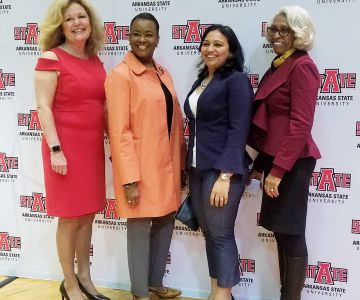All around us there are obvious signs of civic and political engagement. Whether it be the latest trending hashtag on social media, or simply a gathering of protesters in our nation’s capital. A closer look reveals that young adults – even teenagers – are participating and even taking the lead in efforts to change our world. The goal here is to understand why youths are becoming the new face of global change, with a keen focus on social justice, but also with related issues of identity, motivation and making sense in their path through this world disorder. Their purpose in this endeavor is to forge a new path that promotes a more positive and connect way for young people to be the true face of change, and who can help deliver a better world for all people.
The youth of today are not only our future, but they are also actively shaping our world at this moment. Now more than ever, today’s youth represent the front lines of social change everywhere. But the main question is: why? Now, more than ever before, are they identifying themselves as agents of change? Firstly, there is a good amount of research that supports that there is a connection between their role in SJYD and the grave social problems young people face. Second, they are motivated by seeing themselves as assets and agents to the cause. And third, SJYD promotes active civic engagement, conscious members of society – the cornerstones of true democracy (Agents of Change, Shawn Ginwright, Taj James, Ch. 2, Pg 31).
These youth activism programs have an impact on social change and its contribution to youth development. But what is less known is what motivates these young people to engage in such programs. Some theories suggest that this motivation is driven by extrinsic future rewards, and considered a “secondary motivation.” But primarily for these youth, the motivation is authentic, internal and powerful. After all, preparing for the future is intrinsically a task of adolescence in our culture, and forming connections from the program for future goals it what really motivates them (Larson 2011, Positive Development in a Disorderly World). They are looking for a sense of purpose in their lives and engage with the world in a meaningful way with dignity, equality and choice. It’s an innate human need to experience a sense of belonging and connectedness. Social justice issues promise to meet both of these needs.
As an example, 15 year-old Muhammad Najem posted his first Tweet on 7 December, promising to report all the events held by the Assad regime in Eastern Ghouta – a part of Syria which has been under siege since 2013. What motivated Muhammad’s was simply to make the world witness what was happening to kids like him in his part of the world.
There are motivational theories that provide relevant reasons why youth are driven to attend organizing programs. The Self-Determination Theory (SDT) explains that humans are driven to address the needs for relatedness (social support), competence (successfully experience political actions), and a sense of control of their time (autonomy). Indeed, this theory is most widely used in studies of youth program attendance (e.g., Berry & LaVelle, 2013).
Additionally, the Expectancy-Value theory explains youth program attendance. In a study of how adolescents become in engaged in art and leadership programs, Dawes and Larson’s (2011) found that they were more likely to become involved when they found the program valuable and had an expectation of success. While these theories offer a useful framework, more research is needed to understand the subtleties of motivation in the context of these programs.
Identity:
In U.S. society, one’s ethnicity, social class, race, gender, and national origin have a significant influence on their opportunity to develop and learn. Racial majorities with many economic and social resources – or groups that have been historically marginalized by a lack thereof – result in very different experiences of inequality, challenges, and risks to learning and development.
Additionally, structural inequalities are experienced in profound ways by cultural and community practices, and in families. Cultural identities that are based on class, race, ethnicity, national origin, and gender tend to be the deciding factor of how people respond to what it means to be a member of their communities (Banks_etal-LIFE-Diversity-Report).
A good example of this is Noa Golan, a 19-year-old from Israel. For new recruits, the Israeli Defense Forces (IDF) is not only an army but a rite of passage; one that smooths your transition into adulthood. Choosing not to serve can lead to being labeled a threat, or even a traitor. During a scholarship interview for an international high school, Noa was caught off-guard when asked a question about Arab refugees from Israel’s 1948 war. “I thought I was very open-minded, very aware,” she says. “But at the age of 16, I had this realization that I didn’t know much about the conflict’s history. We studied history at school, but it was from a very narrow perspective.” Noa eventually won the scholarship and began talking to people from countries she had before considered enemy countries. With the 2014 Gaza War as a backdrop, Noa’s new peers questioned her about Israel’s actions. That’s when she realized that serving the army would go against her newfound values. “Even for me, it took a long time to accept that I wouldn’t join.”
Youth organizing programs also have unique aspects that pave the way for the growth of developmental assets of critical thinking (Ginwright & James, 2002; Kirshner, 2009) during their adolescent years when youths are susceptible to suggestion and civic views are beginning to develop (Flanagan, 2013; Watts & Flanagan, 2007). Additionally, for adolescents who are of color, female, homosexual, or transgender, these yuth organizing programs may create an environment of belonging, competence, connectedness, safety, and well-being.
Meanmaking:
Today’s youth do not just learn in the classroom. Their engagement in civic and political activities provides them with opportunities to develop and use a variety of important skills. These include critical thinking and communicating in a real-world context, having a real-world impact. It also flexes their citizenship muscles, where they practice good habits of civic engagement that are likely to continue into their adult lives. Between family and community settings, neighborhood-based organizational settings, religious, work, sports, music settings and even gang/street settings – all of these play a prominent role in shaping the youth of today. This is not to mention the additional influence of social media and popular culture. Youth learn to adapt to fast-changing situations and strive to do it while maintaining control over themselves. In this way, they learn to direct their experiences into strategies and tactics for future use (Banks_etal-LIFE-Diversity-Report). More than ever before, engaging young people in worthwhile experiences outside of school requires their engagement in social justice activities.
For example, 16-year-old Jamie Margolin is from Seattle. Last year, Jamie Margolin became transfixed by news alerts flashing on her phone: mudslides in Colombia, Hurricane Harvey, Hurricane Maria and, closer to home, “the thick smog that covered Seattle thanks to stronger-than-usual wildfires in Canada.” Instead of simply ignoring them, Jamie decided to take action. She considers climate change to be the “defining issue of our time,” and will disproportionately affect young people, and youths of color. Her mother and other relative are from Colombia, and live near fracking sites and are worried about the drinking water.
We are better off as a society if people (regardless of age) contribute to making our society a more just and equal one. We understand from a business world perspective that when teams are more diverse, they perform better. Similarly, when our youth are actively involved in civic activity and social justice movements, it addresses issues from the angle that many adults may have been blind to previously.
Today we are witnessing how the SJYD model and it’s needs to further address young people’s experience and their sense of belonging and purpose. These come from the youth that feels intrinsically tied in some way to our social fabric. Young people today are exasperated by inaction; in fact, they are inspired by the desperate need for world change. Around the world, they are learning to speak their truth. They are powerful voices who remind our leaders that we must act now to create a more inclusive society and to propose innovative solutions in the fight for social justice.
When that social fabric is torn, our youth will look for other ways to meet these needs. Across the globe, recent event has demonstrated that extremist groups are more than willing to bring young people into their folds.



